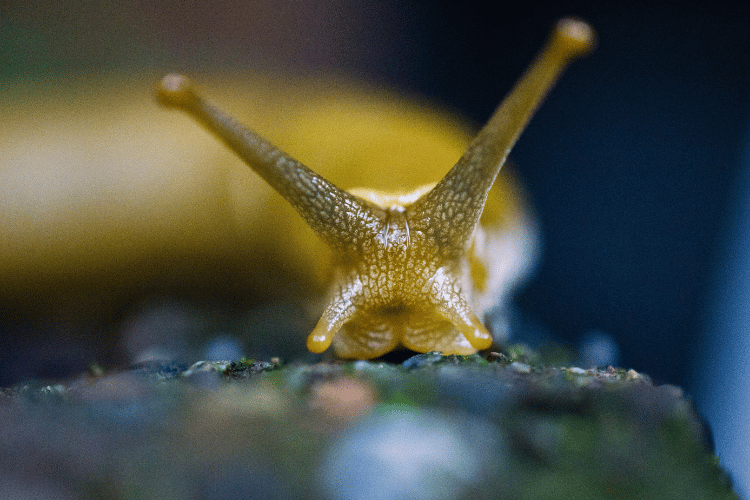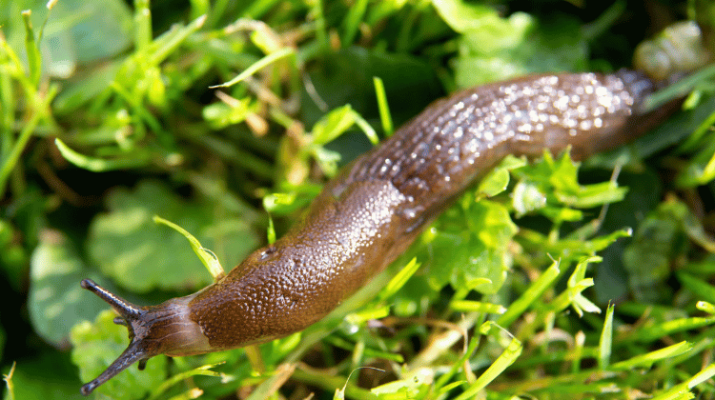Worm farms provide an excellent source of nutrient-rich vermicompost from food scrap waste. However, slugs can pose a serious threat to these valuable worm populations.
In this article, we’ll explore whether common slugs eat worms and how to prevent slug attacks to keep worms safe and productive.
Do Slugs Eat Worms?

The short answer is yes, some invasive species do eat worms to obtain much-needed protein. Slugs are gastropods belonging to the class Gastropoda that inhabit damp places and feed on decaying organic matter and fungi.
However, species like the Grey Garden Slug and Leopard Slug have been known to turn to live worms and other invertebrates if their preferred food of plant matter and fungi is scarce.
In worm farms, where worms are concentrated in a small area alongside plentiful organic waste matter, slugs are drawn to both the abundant plant matter and the worms themselves as potential prey.
Shockingly, species like Leopard Slugs have been recorded eating the slimy trails of other slugs and even their own mucus secretions, showing their propensity to turn to live protein sources when Hungry.
Why Slugs Pose a Threat to Worm Farms
Worm farming involves maintaining a sizable worm population to break down food scraps into valuable worm castings full of nutrients and beneficial microbes. The solid and liquid worm castings can then be used as a nutrient-rich organic fertilizer.
If slug populations grow unchecked in a worm farm, they can start preying heavily on worms and decimate their numbers.
Since each worm processes its body weight in organic waste per day, lower worm numbers make it harder to keep up with added food waste. This causes organic materials to pile up and creates an even more attractive habitat for slug breeding.
Worms also aerate soil through their natural movements while producing compounds that enhance plant growth. If slugs reduce worm populations, all these beneficial services decline drastically.
Their mucus secretions can also introduce pathogens, negatively altering fungi and microbial balance in vermicompost.
Also Relate: What Is the Best Soil for Worm Farming?
Common Slug Species That Eat Worms
The slug species most likely to eat worms include:
- Leopard Slugs: These large spotted slugs have voracious appetites. At up to 8 inches, they can devour several worms per day if populations spike.
- Grey Garden Slugs: One of the most common slugs, these dark grey mollusks turn to worms for protein. High densities in gardens make them prime invaders.
- Great Brown Slugs: Growing over 4 inches long, these notorious plant eaters supplement diets with worms.
- Yellow Cellar Slugs: These yellowish invasive pests hide in moist places and feed on fungi, plants, and worms.
Impact on Vermicompost Quality
If worms succumb to slug attacks, the quality of castings produced declines. Their mucus introduces pathogens that contaminate vermicompost with bacteria and alter the microbial balance.
Slow breakdown of organic materials also promotes anaerobic rotting conditions compared to worms’ ideal aerobic digestion.
Impact on Plants
In addition to directly threatening worm populations, slug overpopulation poses risks to garden plants. As voracious plant eaters, higher densities of species like grey garden slugs and leopard slugs can damage a wide variety of vegetation.
As slugs feed on leaf material, stems, plant debris, and underground roots and tubers, they leave behind telltale slime trails and holes in foliage.
Severe attacks can significantly retard plant growth, leaving seedlings shredded and unable to mature. Established plants become more susceptible to disease.
Slug feeding also facilitates the transmission of bacteria and fungi from one plant to another on mucus trails. Wilts, molds, and rots spread rapidly at sites of slug-feeding damage.
Preventing Slug Attacks

The key is creating an environment inside and around worm farms that deters slug populations from taking hold. This stops them from impacting beneficial worm activity.
Useful tactics include:
Physical Barriers
One option is encircling indoor and outdoor worm farms with copper tape.
Slugs receive tiny electric shocks in contact with copper due to interactions with bodily mucus, making them turn away.
Rough tactile surfaces like diatomaceous earth or eggshell grit can have a similar deterrent effect.
Removal of Hiding Spots and Food Sources
Eliminating excess moisture and clutter around the worm farm removes the shaded hiding places slug populations need to thrive. This includes sealing and elevating compost bins to avoid waterlogging.
Cutting back any nearby dense vegetation, plant debris and rotting vegetable matter also limits nourishing food sources for slug breeding.
Traps and Baits
Beer traps use yeasty liquid to lure slugs to drown. Non-toxic iron phosphate slug baits also draw slugs away from plants.
Like natural predators, these solutions control broader slug numbers, but they won’t stop slugs already inhabiting worm bins, so are best paired with barriers.
What to Do If Slugs Invade Your Worm Farm
If slug populations start ballooning despite preventative measures, take swift action before they devastate worms.
Handpick larger visible slugs and droplets of eggs after rainfall or watering and dispose of them away from the worm farm. You can also lay plentiful traps and bait stations around the bin interior.
Avoid using salt or introducing pathogens when removing slugs manually. Spot-clean any areas with heavy slug slime residue to protect your worms.
Maintaining optimal moisture and acidity while providing plentiful organic matter keeps worms healthy enough to withstand some slug pressure.
Learn more about snail and slug management.
Wrap-Up
Slugs can eat worms to supplement protein needs and may infiltrate worm farms containing abundant organic waste matter, threatening vital worm populations. Their mucus secretions can also alter the microbial balance.
Luckily, barriers, removal of harborage, traps, and baits can effectively prevent slug takeovers and let worms thrive productively alongside a lowered slug population.
Stop slugs before they attack, and both worms and slugs can peacefully coexist in your garden!
Also Read: Your Ultimate Guide to Worm Food and Care

